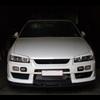What's Your Average Km To A Tank?
Announcements
-
Similar Content
-
Latest Posts
-
Probably. I take it that they are also mentioned to be for R34 Skyline? For example.... RDA has that part as RDA7957. I have the dimpled and slotted version of that on my car https://www.ebay.com.au/itm/285518478694?srsltid=AfmBOopKxMuAFpsxZJdB1cam4D5RAj1f9yJyOttPZLAwXVNCOiwlhrIy This is DBA's top one piece equivalent https://www.ebay.com.au/itm/364246686631?srsltid=AfmBOorbb0XHQgqTvZLgQPhg70nqJtGvdojKnugum3O2LFSr2h-obp8D
-
Ok i will get those 310mm. I found one but on a different site. This is the description on those...is it ok? Technical parameters: - Axle: front. - Disc type: ventilated. - Number of holes: 5. - Disc diameter: 310mm. - Total height with center: 54mm. - Thickness (new/min.): 30/28mm. - Designed for brake calipers manufacturer: Sumitomo.
-
Look for broken wire or bad connector at the motor. Might not be it, but is worth starting there, as it is easy.
-
By Bireley_32 · Posted
Hi everyone, I’m having an issue with my R32 GT-R. Sometimes, when the car goes over a bump or experiences some vibration, the 4WD warning light comes on the dashboard. When I check the code from the control unit in the trunk, it shows Code 19 – ETS Motor. However, everything seems to be working fine — if I turn off the engine and restart the car, the light goes away and everything functions normally. Has anyone experienced this before? Where should I start troubleshooting this issue? Thanks in advance!
-





Recommended Posts
Create an account or sign in to comment
You need to be a member in order to leave a comment
Create an account
Sign up for a new account in our community. It's easy!
Register a new accountSign in
Already have an account? Sign in here.
Sign In Now